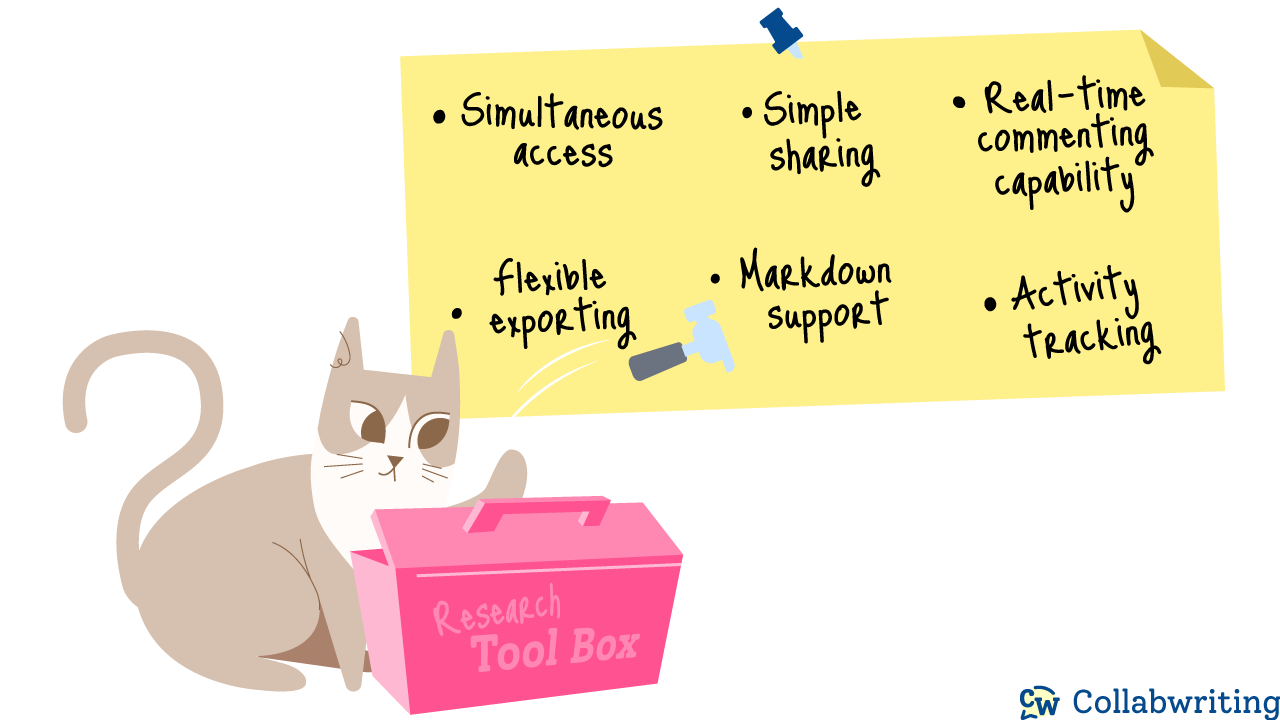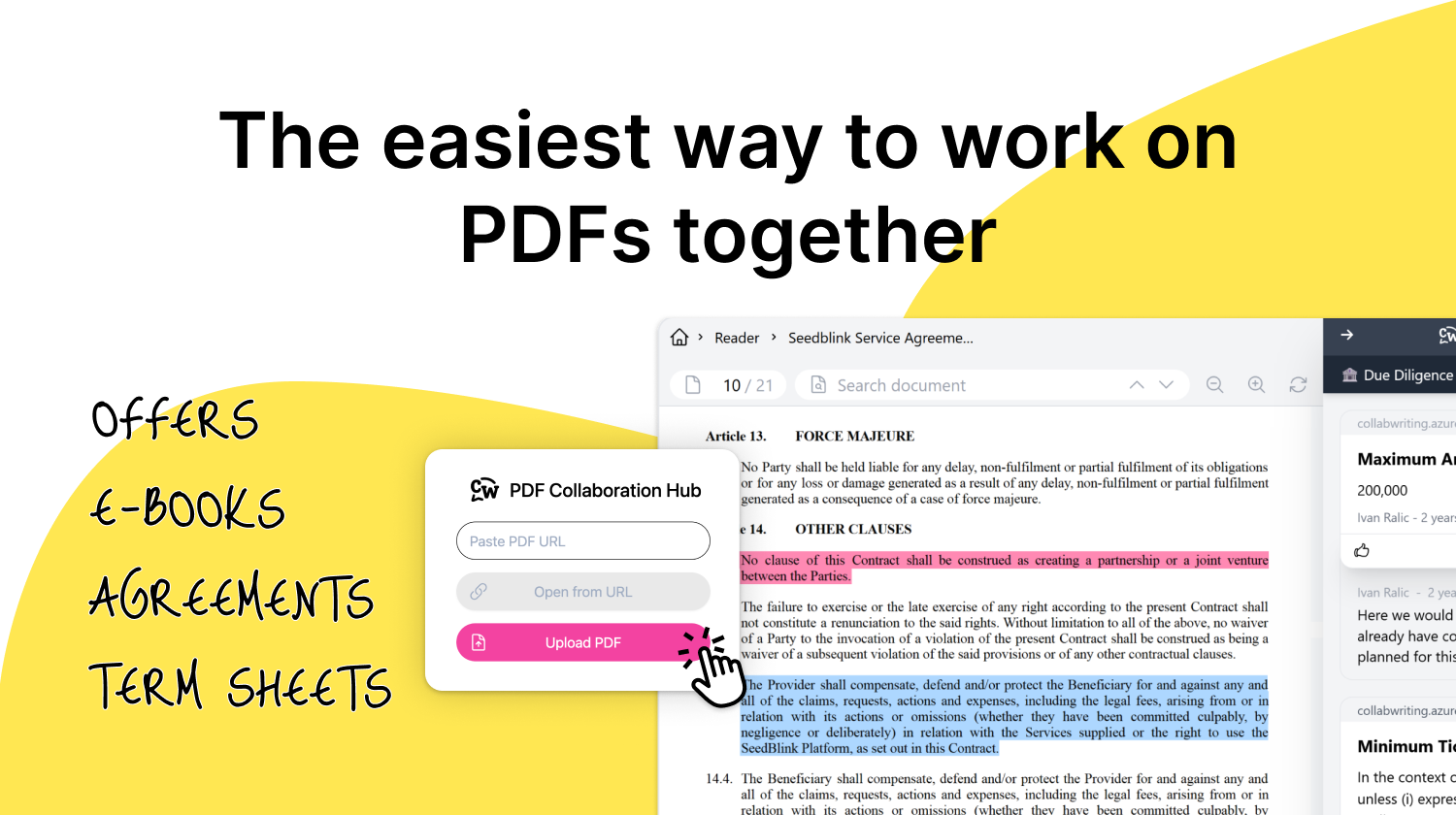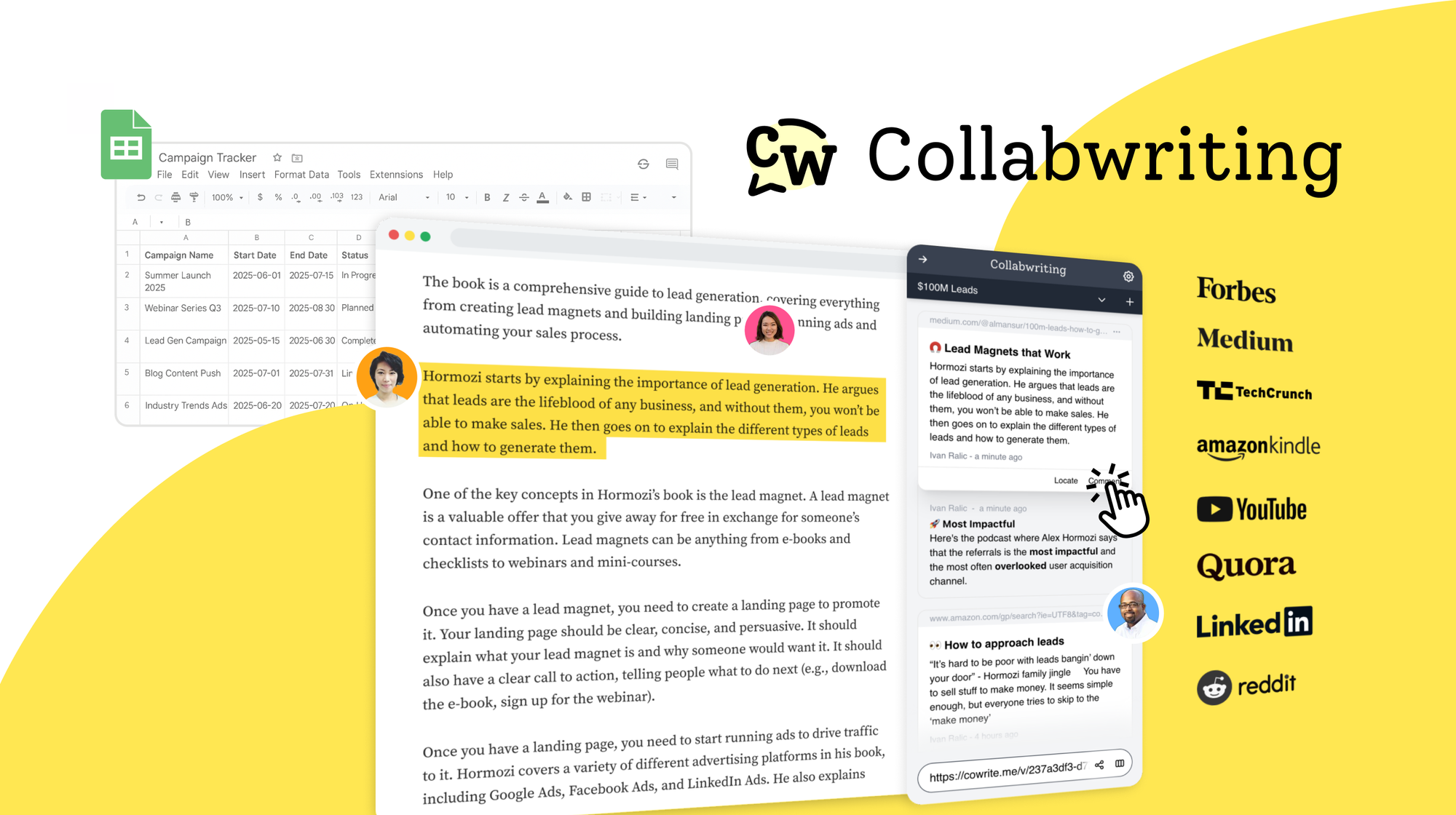Research is at the heart of any academic or professional project. It's about gathering information, analyzing it, and sharing insights that add to what we already know.
But let's be honest - research can get messy. It often takes a lot of time, and when multiple people are involved, things can quickly become complicated.
That's where collaborative research tools make a big difference. They help teams stay organized, work together more smoothly, and keep the whole process moving forward.
What Are Research Collaboration Tools?
Collaborative research tool is a platform that lets multiple people work together - especially useful in research - by creating, editing, and reviewing insights at the same time.
Think of writers, researchers, or students gathering insights on the same document or webpage, no matter where they are. These tools enable real-time collaboration, so everyone can see updates as they happen. It helps teams stay connected and move faster.
As more research happens online, using collaborative tools isn’t just helpful - it's essential for streamlining your workflow, improving teamwork, and getting more done.
Collaborative Research Tools: Features to Look For
When evaluating online collaborative research tools, it's essential to consider the following key characteristics:
- Simple sharing: Ensure the tool enables effortless document sharing, allowing collaborators to quickly access and engage with the latest updates.
- Simultaneous access: Look for tools that seamlessly support multiple users searching through the document or webpage simultaneously, minimizing confusion and enhancing productivity.
- Real-time commenting capability: Feedback is essential, so prioritize tools that facilitate easy commenting on specific documents or web page sections to encourage collaboration and constructive input.
- Activity tracking: Effective tools should provide clear visibility of changes made by various collaborators, enabling easy tracking of any changes made.
- Markdown support: Seek tools that offer Markdown export, allowing writers to continue editing their text without skipping a bit.
- Flexible exporting: Opt for writing apps that offer diverse export formats such as PDF, EPUB, and Microsoft Word, ensuring compatibility and versatility when sharing or publishing the final work.

Keeping these criteria in mind will help you choose the right online collaborative tools - ones that support great teamwork and make both your writing and research process more efficient.
Why Use Research Collaboration Tools?
- Improved efficiency: Collaborative writing tool streamlines the research process by reducing the time spent coordinating and consolidating individual contributions. Researchers can work concurrently, eliminating delays caused by waiting for others to finish their part. This increased efficiency can significantly accelerate research project completion.
- Enhanced collaboration: Research often involves multidisciplinary teams with diverse expertise. Collaborative writing platforms create a virtual environment where researchers can easily communicate, share ideas, and collaborate in real time. This fosters collective ownership and promotes synergy, leading to better outcomes.
- Error reduction and quality control: The ability to track changes, review edits, and maintain a centralized document dramatically reduces the chances of errors or omissions. Utilizing collaboration tool promotes systematic review and ensures that all aspects of the research project are thoroughly checked, contributing to the overall quality of the work.
- Seamless integration of research components: Research projects typically involve various elements such as literature reviews, data analysis, and results interpretation. Collaboration tools enable researchers to seamlessly integrate these components, ensuring consistency and coherence throughout the document. This holistic approach fosters a more comprehensive understanding of the project.
- Effective communication and feedback: Communication is key in research collaboration. Collaborative writing platforms provide features for commenting, annotating, and providing feedback on specific sections of a document. This streamlined approach enhances clarity and accelerates decision-making, leading to more effective collaboration.
- Accessibility and convenience: By utilizing collaborative writing tool, researchers can access their documents from any device. This accessibility eliminates the need for physical file transfers and enables seamless collaboration, even when team members are geographically dispersed.
- Streamlined writer-editor relationship: Collaboration tools play a vital role in the writer-editor relationship. They allow writers and editors to work seamlessly together, keeping track of changes, suggestions, and revisions on one centralized platform. This feature ensures clear communication, eliminates version control issues, and streamlines the editing process. Writers can easily address the editors' comments and suggestions, resulting in a more refined and polished final product.
Every team works differently. When choosing a tool, focus on:
1) Ease of use: Pick something intuitive that fits your team’s workflow.
2) Encourage adoption: Help teammates get comfortable without overwhelming them.
3) Respect workflows: Don't force big changes - optimize collaboration to fit existing habits.
The Seamless Integration of Collaborative Research Into Your Workflow
Creating effective collaboration requires considering your team's unique needs and preferences. Each team develops its own culture, writing style, and workflow, which should be considered. Instead of imposing strict control over collaboration, the focus should be on optimizing the collaborative environment to align with the team's requirements.
When implementing new research tool, it's important to consider user adoption and potential resistance to change. To minimize disruption, choose an intuitive user interface that aligns with their existing activities. Avoid overwhelming them with unnecessary additions and features that require extensive re-learning, and strive to provide a seamless transition that respects their established workflows.
Collabwriting: A Research Collaboration Tool Built for Teams
Collabwriting is a real-time research collaboration tool that helps teams collect, organize, and share insights effortlessly.
- Highlight and save notes directly from webpages, PDFs, and videos.
- Create a searchable knowledge base accessible to everyone on your team.
- Collaborate, comment, and give feedback instantly - all in one place.
Say goodbye to scattered info and endless tabs. Collabwriting makes research teamwork easy and productive.

Collabwriting - Shareable Notes on Web Pages and PDFs
Collabwriting allows you to gather all your online sources in one place. No more endless scrolling, no more lost insights, just simple, structured knowledge at your fingertips.
Just highlight, save, and collaborate with anyone on any content you find online.
Final Notes
Research collaboration tools aren't just nice to have - they're essential for teams looking to work smarter and faster. They help break down barriers, improve communication, and keep projects moving.
Try Collabwriting today and see how easy real-time research collaboration can be. 🥳





![The Best Tool for Collaborative Research in Content Marketing Teams [2026]](/content/images/2025/12/image--5-.png)

![5 Tools Marketers Use to Organize Research - Compared [2026]](/content/images/2025/11/cover-4-1.png)

![Build Credibility in Research: Smart Way to Verify Information and Track Sources Easily [2025]](/content/images/2025/10/covers-for-blog--7--1.png)

![How Marketers Can Turn LinkedIn Content into Collaborative Research [2025]](/content/images/2025/10/covers-for-blog--8-.png)
![Best Readwise Alternative for Personal & Team Research [2026]](/content/images/2025/09/Frame-814--3-.png)

